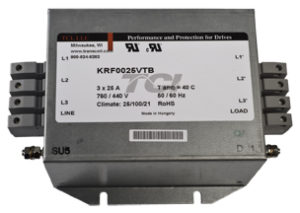- Location
- San Francisco Bay Area, CA, USA
- Occupation
- Electrical Engineer
First off, as the others have said, grounding is CRITICAL to a good VFD installation. The NEC grounding requirements are only about safety, grounding requirements for VFDs are more stringent and if you get sloppy, you get problems. Ground wire back to the VFD from the motor is the most important thing, never rely on just the conduit (assuming steel), even though the NEC says that's OK.
Then next, the output cables will broadcast a signal if left unshielded. The shielding can be STEEL conduit, but if you ran cable without a shield or PVC conduit, you have a radio broadcast antenna. If it is anything other than steel conduit making the VFD to motor connection, use shielded VFD cable and ground BOTH ands of the shield, not just one end (that only applies to signal and control wiring). You are creating a "faraday cage" around the conductors, you need solid grounding of that "cage".
Last issue is the line side conductors, which can also broadcast noise. IF the outputs are all correct and you still have the noise, then you need an EMI/RFI filter. Whether or not it is a Franklin or Pentair pump, you can get an EMI/RFI filter for the line side of any VFD from people like TCI, Schaffner, MTE etc.

 transcoil.com
transcoil.com
 www.schaffnerusa.com
www.schaffnerusa.com
Then next, the output cables will broadcast a signal if left unshielded. The shielding can be STEEL conduit, but if you ran cable without a shield or PVC conduit, you have a radio broadcast antenna. If it is anything other than steel conduit making the VFD to motor connection, use shielded VFD cable and ground BOTH ands of the shield, not just one end (that only applies to signal and control wiring). You are creating a "faraday cage" around the conductors, you need solid grounding of that "cage".
Last issue is the line side conductors, which can also broadcast noise. IF the outputs are all correct and you still have the noise, then you need an EMI/RFI filter. Whether or not it is a Franklin or Pentair pump, you can get an EMI/RFI filter for the line side of any VFD from people like TCI, Schaffner, MTE etc.

KRF - EMI Filter
Reduce High Frequency Distortion KRF filters use a combination of high frequency inductors and capacitors to reduce noise in the critical 150 kHz to 30


